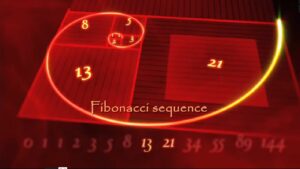Fibonacci is the name of an Italian mathematician who in the year 1202 introduced a very special number sequence in Europa that had been known in India for centuries.
The mathematical rule of this sequence is so simple that even children can understand or even ‘invent’ it. Starting with 0 and 1, each next number is the sum of the previous two: so 0+1=1, 1+1=2, 1+2=3, 2+3=5, 3+5=8 and so on to infinity. This gives a sequence that starts with 0, 1, 1, 2, 3, 5, 8, 13, 21, 34, 55, 89, 144…
Curiously, this simple sequence of numbers is frequent in nature. For example: almost always the number of petals of a flower is a number from this sequence. For the same reason we have five fingers on hands and feet. In addition to plants and animals, it is also found in large geological and astronomical structures (perhaps not in the numbers themselves, but by the spiral that derives from them). Despite (or perhaps thanks to) the simplicity of this mathematical sequence, it is a fundamental rule of everything that exists and can even describe very complex phenomena.
The simplest way to visualize this sequence, is to draw it on a paper with squares on it.
From there comes, on one hand, what is considered the most beautiful rectangle, for the proportion between width and height called the Golden Ratio, and on the other hand a very special spiral that can be found many times in nature, from sea shells and storms to galaxies.
Original title in spanish: Geometría Sagrada – Secuencia Fibonacci – Naturaleza Fractal y Proporción Áurea






